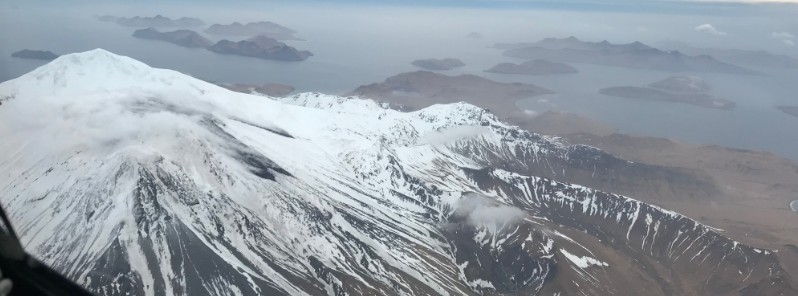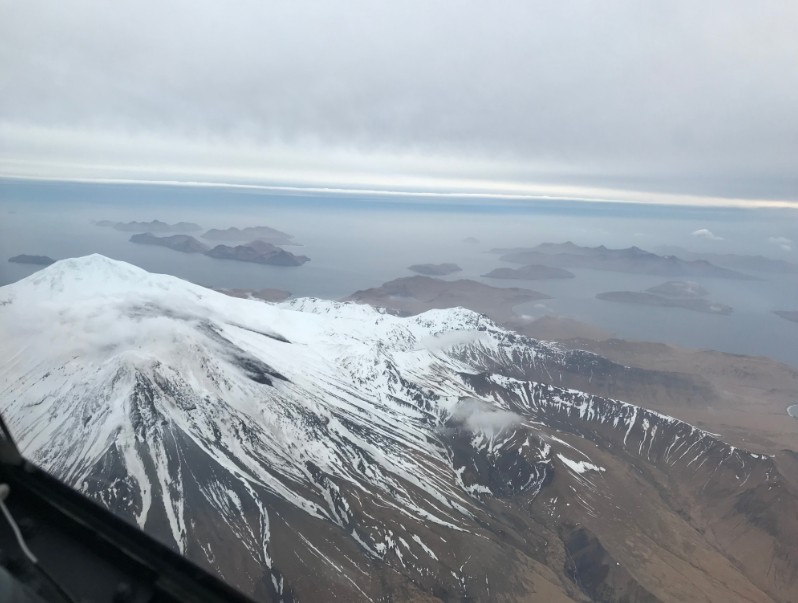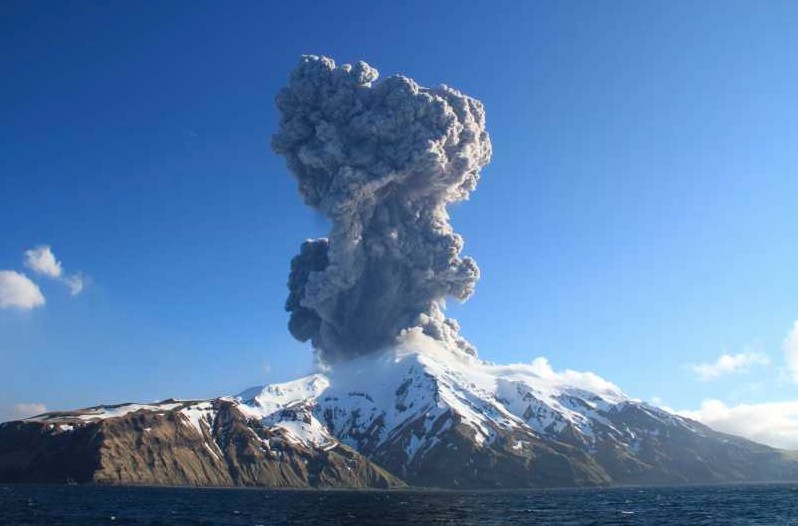Lava flow field at Great Sitkin grows to more than 1.3 square km, Alaska

Seismicity at Great Sitkin volcano continues at low but above background levels and satellite data shows elevated surface temperatures.
In addition, new SAR images from DLR show the lava flow field has grown to more than 1.3 km2 (0.5 mi2).
The SE edge seems to have surmounted the crater rim, so we may expect a new lobe soon, the Alaska Volcano Observatory said.1
New #SAR images from DLR of Great Sitkin Volcano where the lava flow field has grown to >1.3 km2. The SE edge of seems to also have surmounted the crater rim, so we may expect a new lobe soon. Small earthquakes have continued at a low rate.
Animation: S. Plank, @DLR_en pic.twitter.com/ojDMIqHiND— Alaska AVO (@alaska_avo) December 20, 2021
It remains possible that explosive activity could occur with little or no warning.
Great Sitkin is at Current Volcano Alert Level WATCH and Aviation Color Code ORANGE.

Photo of Great Sitkin Volcano taken during Alaska Airlines flight 187 from Adak to Anchorage on Sunday, December 19, 2021. The steaming flows can be seen flowing away from the crater. Image credit: First Officer Joseph Leman, submitted by Captain Dave Clum.
The first significant explosion at Great Sitkin since 1974 took place on May 26, 2021. The resulting ash cloud rose up to 4.5 km (15 000 feet) above sea level and drifted east.2

Image credit: Lauren Flynn, USFWS
Geological summary
Great Sitkin forms much of the northern side of Great Sitkin Island.
A younger parasitic volcano capped by a small, 0.8 x 1.2 km (0.5 – 0.7 miles) ice-filled summit caldera was constructed within a large late-Pleistocene or early Holocene scarp formed by massive edifice failure that truncated an ancestral volcano and produced a submarine debris avalanche.
Deposits from this and an older debris avalanche from a source to the south cover a broad area of the ocean floor north of the volcano. The summit lies along the eastern rim of the younger collapse scarp.
Deposits from an earlier caldera-forming eruption of unknown age cover the flanks of the island to a depth up to 6 m (20 feet). The small younger caldera was partially filled by lava domes emplaced in 1945 and 1974, and five small older flank lava domes, two of which lie on the coastline, were constructed along the northwest- and NNW-trending lines.
Hot springs, mud pots, and fumaroles occur near the head of Big Fox Creek, south of the volcano.
Historical eruptions have been recorded since the late-19th century.3
References:
1 Alaska AVO – December 21, 2021 – Twitter
2 First significant explosion at Great Sitkin since 1974, Alaska – The Watchers
3 Great Sitkin – geological summary – GVP
Featured image: Great Sitkin, Alaska on December 19, 2021. Credit: First Officer Joseph Leman, submitted by Captain Dave Clum.

Commenting rules and guidelines
We value the thoughts and opinions of our readers and welcome healthy discussions on our website. In order to maintain a respectful and positive community, we ask that all commenters follow these rules.